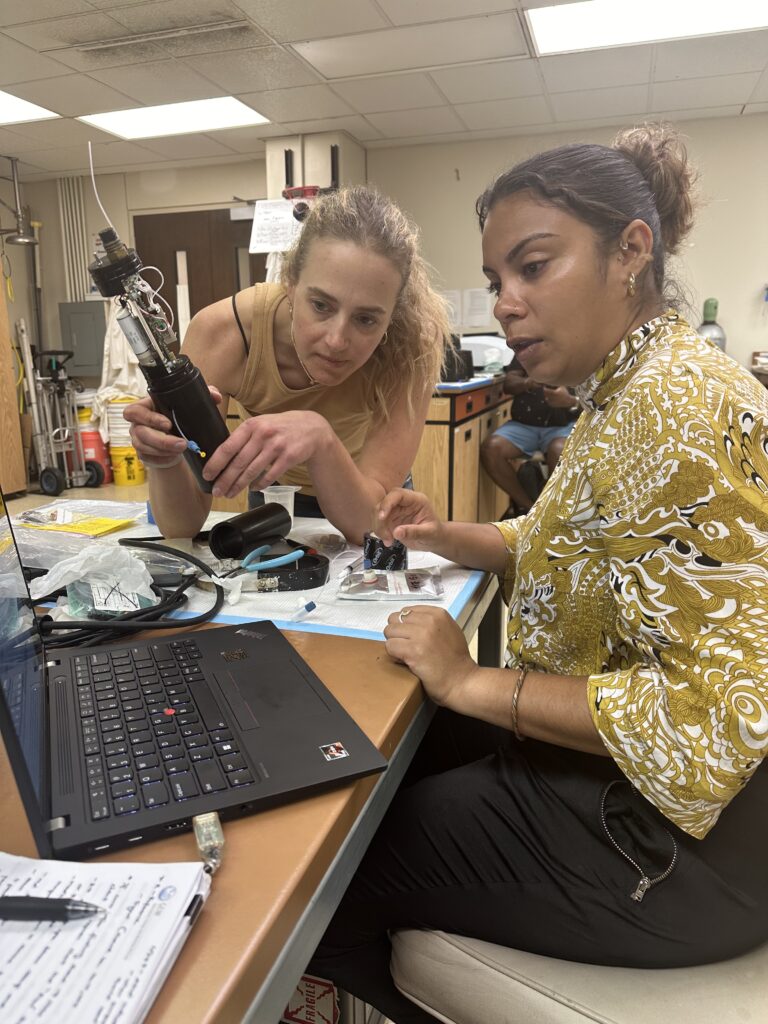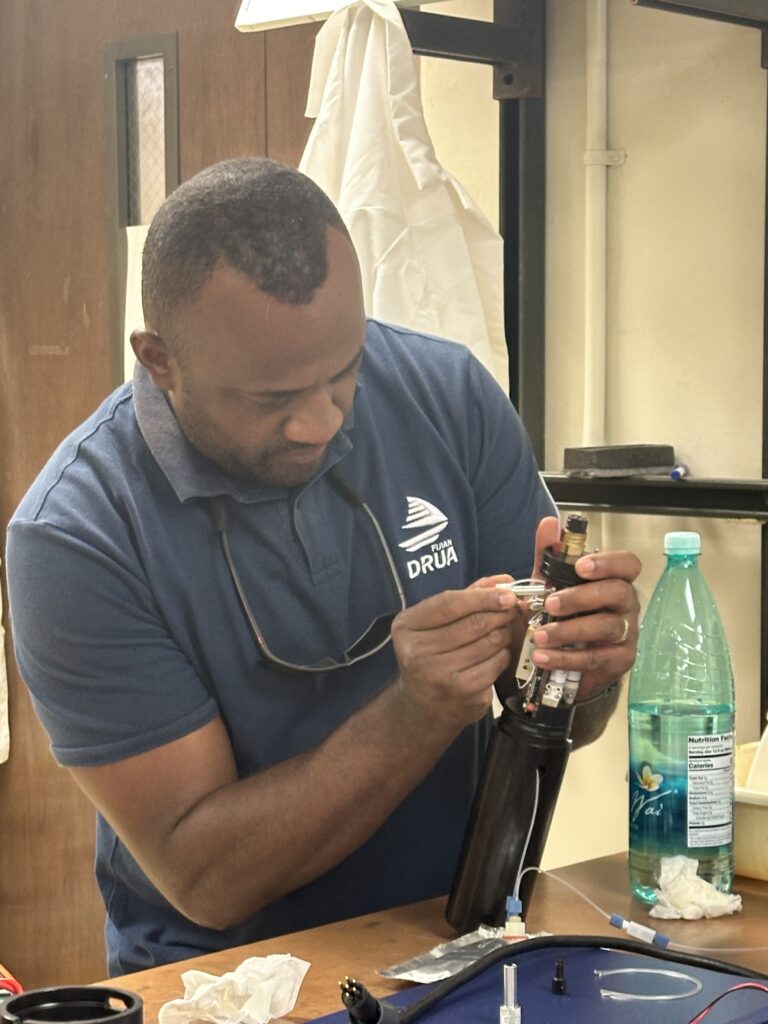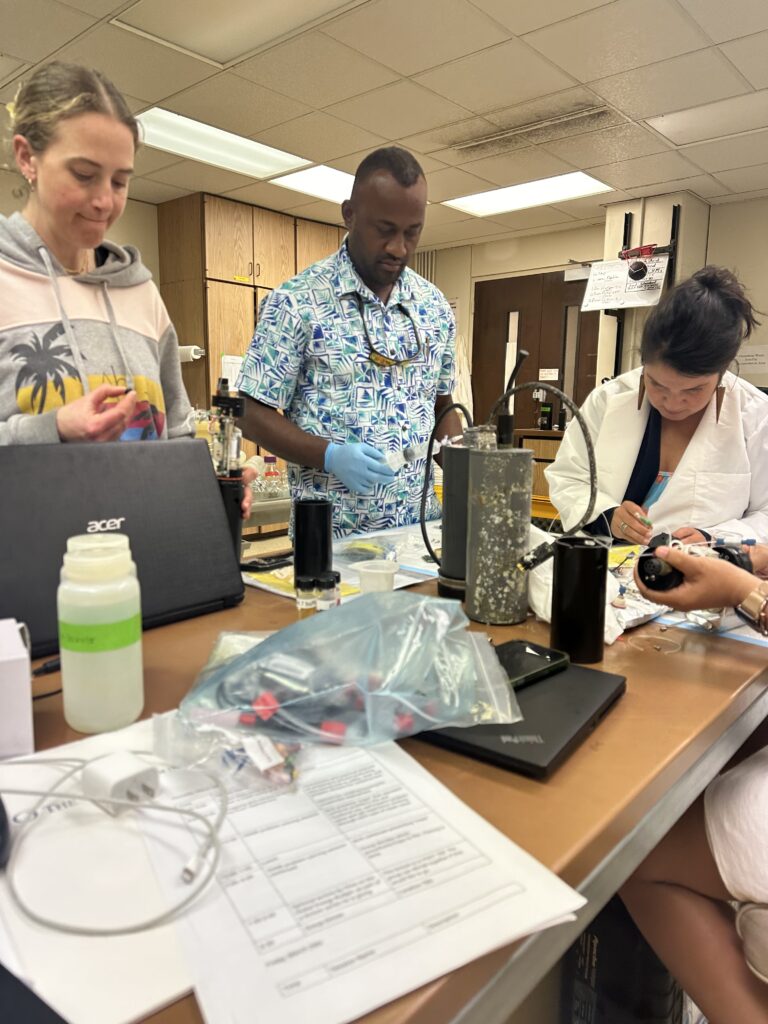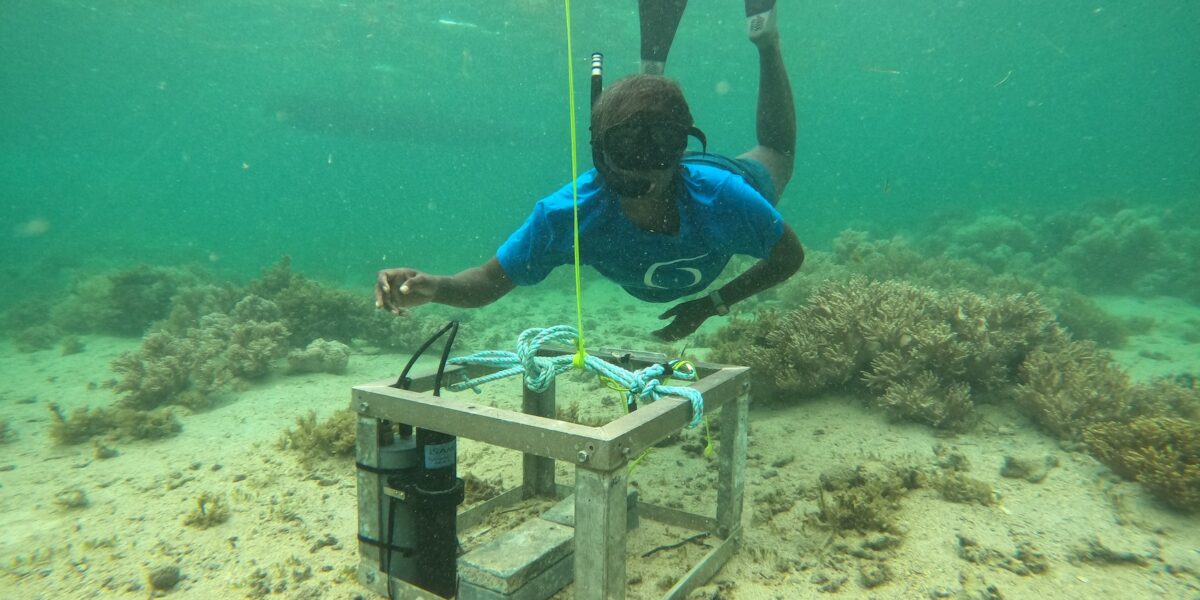Wrapping up seven years of ocean acidification monitoring and capacity building in the Pacific Islands.
A community’s ability to monitor and understand the ocean is directly tied to that community’s health and well-being.

(Photo by Ocean Science Equity (OSE))
Ocean Science Equity‘s goal, as one of The Ocean Foundation’s initiatives, is to tackle unequal access to ocean science. We accomplish this by supporting local experts, establishing regional centers, co-designing and deploying affordable equipment, and providing training.
We are wrapping up seven years of ocean acidification capacity building in the Pacific Islands, which began in 2017. In 2020, a public-private partnership between The Ocean Foundation (TOF) and NOAA established a regional training hub — the Pacific Islands Ocean Acidification Centre (PIOAC).
We also continued strengthening our monitoring and research programs. As Ocean Science Equity’s involvement wraps up, we wanted to highlight some successes from the last three months, including:
Distribution of additional GOA-ON in a Box kits to new communities in Kiribati and the Philippines. This increased access to low-cost, easy-to-use equipment in the region.
- TOF worked with manufacturers to tailor the kits according to the specific location needs.
- TOF met with manufacturers at the 2024 Ocean Sciences Meeting to discuss options that would work best for use near dynamic fish farms in the Philippines.
- TOF edited and provided a new total alkalinity equipment unboxing and setup video for kit recipients.
“The GOA-ON kit has allowed Pacific Island trainees to take back to their countries new expertise and equipment to be able to start an OA monitoring programme.”
– Dr. Antoine de Ramon N’Yeurt, Researcher in Fiji
Organized a four-day workshop on pH sensor repair, an essential component of ocean acidification monitoring.
- Kit recipients learned how to repair the sensors without sending them back to the manufacturer (Sunburst Sensors).
- Teaching community members how to repair the sensors themselves reduces downtime and reliance on external repair services.
- Sunburst Sensors staff provided expert training on troubleshooting and repair of the iSAMI pH sensor.
- After the training, local staff said they felt more confident about repairing most of the sensor issues themselves.
“We see SAMIs all the time that the user could maintain on their own with a bit more familiarity in how they operate. Users who are willing to do some simple testing and troubleshooting will have a lot more success collecting quality data over the lifetime of the instruments.”
– Britt Peterson, Research and Manufacturing Engineer @ Sunburst Sensors
Established contracts with GOA-ON in a Box kit recipients to ensure support for staff and repair.
- A primary researcher will maintain and use the kit.
- Kit recipients will report their research plans on a semi-annual basis, triggering additional funding.
Participants in the four-day workshop learning how to repair the iSAMI pH sensors (Photos by Ocean Science Equity (OSE)):



Some additional project highlights over past three and a half years include:
- Input: 44 working group members met over 47 meetings to determine the best ways to meet regional needs. This included one Talanoa — a traditional Fijian, Samoan and Tongan word for dialogue that brings people together to share opposing views without any predetermined expectations for agreement.
- Training: 3 in-person trainings with 12 countries or territories represented. 131 finishers of the Ocean Teacher Global Academy online ocean acidification course.
- Equipment: 7 new GOA-ON in a Box kits and over $200,000 worth of equipment and spare parts.
“As a Young Women Producer Broadcaster I will share what I have which I have been doing for the past seven weeks to women leaders whom I’m working with on the effects of OA: how important it is for us to know these effects as first responders in the family and community. It’s important to know the concept and its impacts on the environment, especially those women who rely on the ocean for their livelihoods.”
– anonymous PARTICIPANT IN THE Ocean Teacher Global Academy online ocean acidification course
TOF and NOAA have laid a strong foundation for ocean acidification monitoring in the Pacific Islands. This foundation has support from a diverse group of experts.
The PIOAC is already making significant strides in research across the region, thanks to leadership by The Pacific Community and strong partnerships with the University of the South Pacific, the University of Otago and the National Institute of Water and Atmospheric Research.
Through training and kit distribution, the project has expanded the network of researchers dedicated to ocean acidification research. This network ensures the establishment of long-term monitoring programs and contributions to global datasets. We are thrilled to share how this long-term investment in building partnerships and infrastructure has laid the groundwork to be sustained far beyond the end of TOF’s time there.
To learn more about the Ocean Science Equity (OSE) Initiative, check out these resources:
- Ocean Science Equity Initiative
- GOA-ON in a Box
- GOA-ON in a Box training video series (available in English, French, Portuguese and Spanish)
- PCO2
- Ocean Acidification Research







